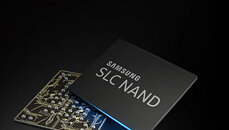
GIGABYTE AORUS RTX 5080 MASTER Starts Leaking Thermal Gel After Four Weeks of Light MMO Gaming
An unlucky owner of a GIGABYTE AORUS GeForce RTX 5080 MASTER ICE 16 GB graphics card has reported a baffling instance of thermal gel leakage. A forum post—titled: "5080 oh my god thermal problem"—on the Quasar Zone BBS alerted the wider world to this bizarre fault. The South Korean MMORPG enthusiast described circumstances up until the point of critical liquefaction: "it's been exactly a month since I bought it. I use it for (Blizzard's) World of Warcraft. Two hours of use per day. I set up the card with a riser kit. Thermal (material) is crawling out?!" Early 2025 press coverage has largely focused on other types of unwanted high temperature events involving GeForce RTX 50-series cards, but the seeping out of "server-grade thermal conductive gel" compound is something new. As reported by several PC hardware news outlets, GIGABYTE has utilized fancy thermal conductive gel within flagship SKUs—instead of traditional/conventional thermal pads. This gel was placed over the card's VRAM and MOSFET sections; following fairly light usage (as described above) some of this material started to head down—getting ever closer to the unit's PCIe interface.
Assisted by the AORUS RTX 5080 MASTER ICE's vertical orientation, the (apparently) highly deformable, but non-fluid thermal gel was susceptible to the effects of gravity. JC Hyun System Co., Ltd.—GIGABYTE's official domestic importer (for South Korea)—weighed in with a separate bulletin: "we are aware of the thermal gel issue with the GIGABYTE GeForce RTX 50 series, which was first posted on Quasar Zone—(we) are currently discussing the thermal gel issue with GIGABYTE HQ and future customer service regulations. In addition, we sincerely apologize for the confusion caused to many customers who love and use GIGABYTE products due to inaccurate guidance provided to customers who received the products due to unclear customer service regulations regarding the issue that occurred this time. Lastly, when the manufacturer's customer service policy regarding this thermal gel issue is finalized, we will also forward the service policy to CS Innovation so that it can be processed smoothly in accordance with the service policy. We will also provide information through a separate post so that more customers can be aware of the information." As mentioned by Notebookcheck, GIGABYTE uses this special thermal gel solution on other highly expensive custom: "RTX 50-series cards like the GeForce RTX 5090 XTREME WATERFORCE 32G, RTX 5090 MASTER ICE, RTX 5070 Ti MASTER, and others."
Assisted by the AORUS RTX 5080 MASTER ICE's vertical orientation, the (apparently) highly deformable, but non-fluid thermal gel was susceptible to the effects of gravity. JC Hyun System Co., Ltd.—GIGABYTE's official domestic importer (for South Korea)—weighed in with a separate bulletin: "we are aware of the thermal gel issue with the GIGABYTE GeForce RTX 50 series, which was first posted on Quasar Zone—(we) are currently discussing the thermal gel issue with GIGABYTE HQ and future customer service regulations. In addition, we sincerely apologize for the confusion caused to many customers who love and use GIGABYTE products due to inaccurate guidance provided to customers who received the products due to unclear customer service regulations regarding the issue that occurred this time. Lastly, when the manufacturer's customer service policy regarding this thermal gel issue is finalized, we will also forward the service policy to CS Innovation so that it can be processed smoothly in accordance with the service policy. We will also provide information through a separate post so that more customers can be aware of the information." As mentioned by Notebookcheck, GIGABYTE uses this special thermal gel solution on other highly expensive custom: "RTX 50-series cards like the GeForce RTX 5090 XTREME WATERFORCE 32G, RTX 5090 MASTER ICE, RTX 5070 Ti MASTER, and others."





















































































